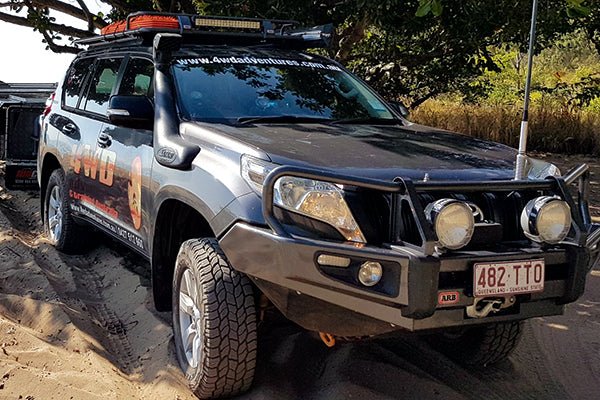
Recovery 101 With An Industry Pro
|
|
Time to read 2 min
|
|
Time to read 2 min
Drive offroad long enough, and sooner or later you are going to find yourself in a situation where you will need to be recovered. It happens to all of us! But a little preparation before you leave home and knowing what to do to recover your rig will make all the difference.
Don’t wait until you need to be recovered to find out your recovery gear isn’t up to the task, regularly inspect your gear — especially before hitting the road — and be ready.
YOUR GEAR AND CAMPER
Only use rated recovery gear. If it doesn’t have “WLL” stamped on it and a weight, e.g., WLL 4.75 T, then it most likely isn’t rated, and this increases the risk of a situation going bad. Look for two rated recovery points on the front of your vehicle (not the factory tie down points) and at least one on the back. Never attempt to recover off a tow ball, it will only end in disaster! For your camper trailer, you'll want a rated recovery on the front and two rated recovery points on the back.
The jockey wheel will most likely hinder an offroad recovery, so make sure it can be dragged on the drawbar. The good news is that most camper trailers built today come with two rated recovery points on the rear, allowing for a bridle or equaliser strap to be used, providing a central pull. Make sure your camper trailer recovery points are engineered and welded to the trailer chassis though, and not an afterthought just welded to the body of the trailer.
HOW FAR UP SHIT CREEK ARE YOU?
Recovering a vehicle with a camper trailer is no different than any other recovery—the first thing to do is relax, and assess the situation. Ask yourself the following questions:
How stuck am I? What force is going to be required to get me out? And is my recovery gear rated to handle this?
Most people, for example, jump straight into a snatch strap recovery, without taking into account the force required. This is when things can go wrong! Being prepared, taking time to think about what is actually happening, knowing what your combined vehicle load is, and having the correct, rated recovery equipment to handle that load, will usually get you out safely and without further incident.
THE RECOVERY
In most recovery situations it will be necessary to disconnect the camper trailer from your vehicle and recover them separately. This is mainly due to the combined load to be recovered, while also taking into account the resistance created by the terrain, incline, depth of mud or sand and so on.
To make the recovery process safer and reduce the risk of damage to the vehicle, camper trailer, recovery gear and most importantly you and your family, you will need to do some prep work to aid this recovery process. You need to remove some or all of the resistance to the vehicle or camper trailer. Take out your long handle shovel and remove the dirt, mud, sand and so on from the front of the wheels, creating a ramp for the wheels to travel up onto and out of the mire. Using Maxtrax, Tredz or similar helps here.
By being prepared, having the correct equipment and doing a little work to aid the process, you will be reducing the load on the recovery equipment and the recovery itself. You'll be safe and sound, back on the track and enjoying your trip again in no time.